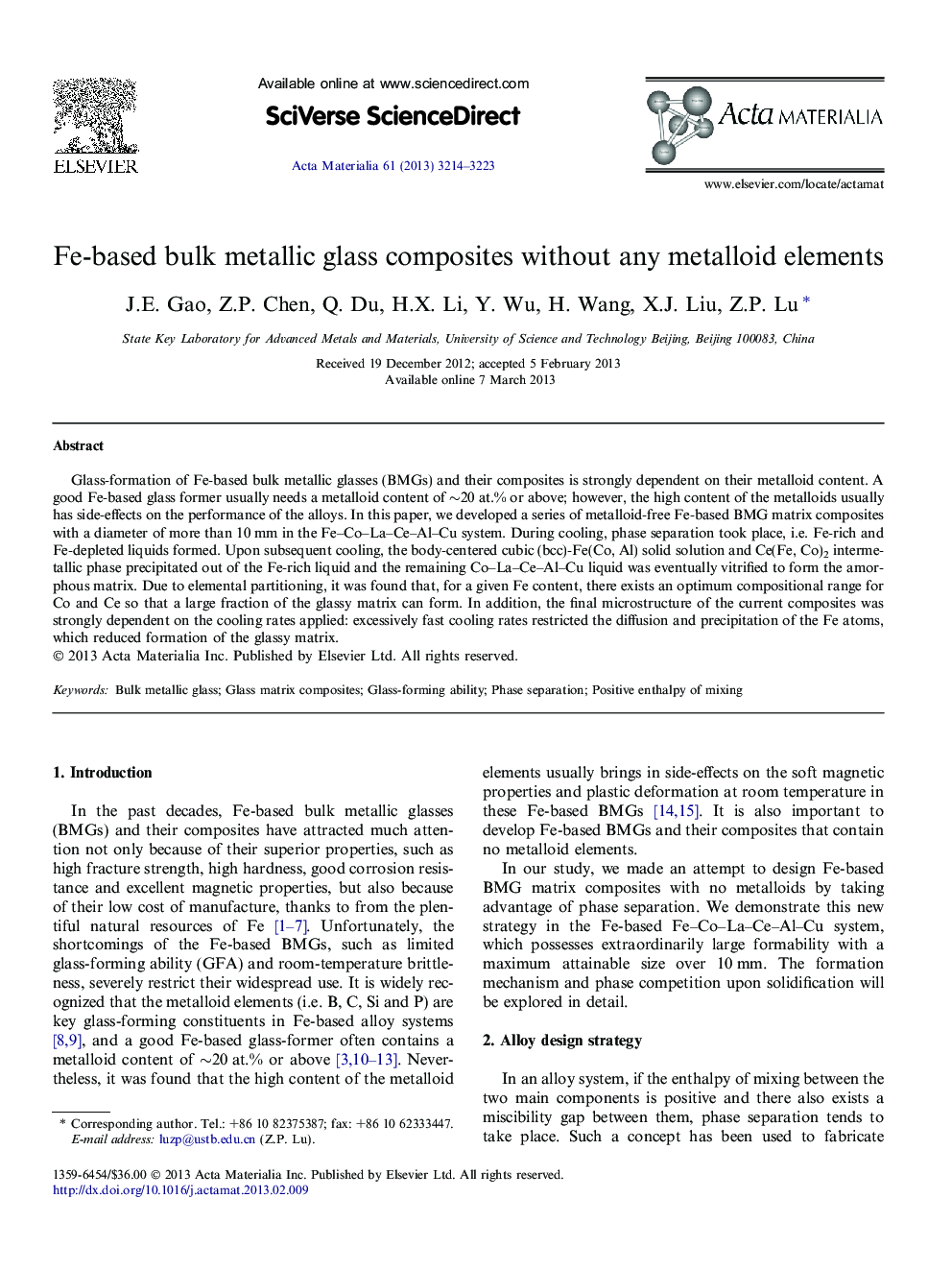| Article ID | Journal | Published Year | Pages | File Type |
|---|---|---|---|---|
| 1446381 | Acta Materialia | 2013 | 10 Pages |
Glass-formation of Fe-based bulk metallic glasses (BMGs) and their composites is strongly dependent on their metalloid content. A good Fe-based glass former usually needs a metalloid content of ∼20 at.% or above; however, the high content of the metalloids usually has side-effects on the performance of the alloys. In this paper, we developed a series of metalloid-free Fe-based BMG matrix composites with a diameter of more than 10 mm in the Fe–Co–La–Ce–Al–Cu system. During cooling, phase separation took place, i.e. Fe-rich and Fe-depleted liquids formed. Upon subsequent cooling, the body-centered cubic (bcc)-Fe(Co, Al) solid solution and Ce(Fe, Co)2 intermetallic phase precipitated out of the Fe-rich liquid and the remaining Co–La–Ce–Al–Cu liquid was eventually vitrified to form the amorphous matrix. Due to elemental partitioning, it was found that, for a given Fe content, there exists an optimum compositional range for Co and Ce so that a large fraction of the glassy matrix can form. In addition, the final microstructure of the current composites was strongly dependent on the cooling rates applied: excessively fast cooling rates restricted the diffusion and precipitation of the Fe atoms, which reduced formation of the glassy matrix.
